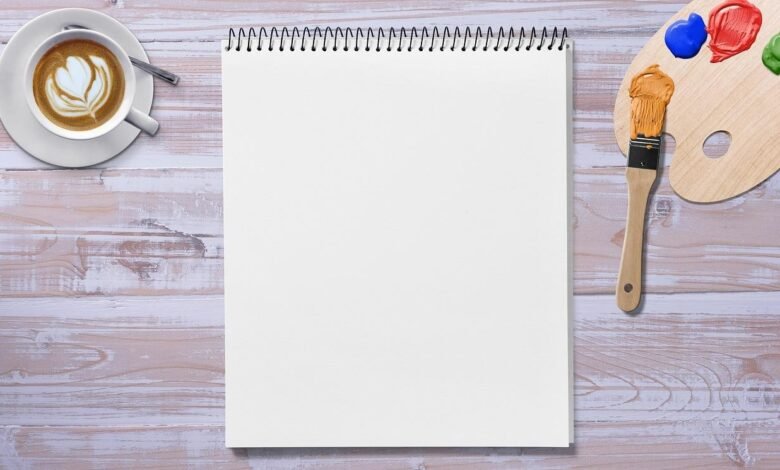Why Choosing Quality Drawing Paper Makes A Difference In Your Art

The quality of the drawing paper used by an artist makes a difference in the end product of their work. It is easy and may be quite tantalizing to resort to the cheapest or most available types of papers. However, only by investment in fine types of paper can the creative process be truly elevated and success brought to the final pieces.
Weight, abruption, and texture all play a significant role in how your media interacts with the surface to dictate flow, blending, and the overall look of your artwork. Quality drawing paper is designed to handle the demands of various techniques, from light-thin pencil strokes to bold expressive marks in charcoal.
The article identifies five reasons why using quality drawing paper can make all the difference in your art and enable you to craft pieces of work for the engagement and inspiration of your audience.
1. Enhanced Texture and Detail
The texture and surface of the drawing paper you use can phenomenally affect the effect and visual impact your work will produce. Most high-quality drawing papers are more refined, with an even surfaced feel that allows most drawing mediums to rest better while still allowing you to produce finer, more delicate details.
Smoothness and evenness in high-quality drawing paper will further enhance the quality of your stroke to achieve cleaner lines, softer blending, and nuances in shadings. This aspect of surface quality is essential in working with dry media, such as pencils, charcoal, or pastels, because it will develop the full capabilities of the paper to hold and capture the fine details of your work.
Whereas higher quality papers have an even and fine surface, poorer quality ones will have a decidedly more irregular and coarse surface, which will catch and snag your drawing tools further, often causing them to skip along unevenly and produce non-precise work. This most easily becomes frustrating during the working process of an intricate, delicate, or highly detailed piece.
2. Durability
Another important factor determining the durability of the drawing paper is resistance to wear and tear over a certain period. Better material and production processes guarantee quality drawing paper.
What happens here is that you will keep erasing, blending, or reworking certain areas when you’re working on a drawing. These mediocre papers can only be handled sometimes. Hence, frustrating issues arise, such as tearing, pilling, and surface damage. This negatively impacts the integrity of your work and makes it hard for you to achieve specific results.
In contrast, high-quality drawing papers are made to be more resistant and have a more robust internal structure, with the surface able to bear the rigors of the creation process quite well. You’ll work comfortably with assurance, knowing your artwork will maintain structural integrity and visual appeal even after extensive handling or reworking.
3. Better Ink and Pencil Hold
The ability of the drawing paper to effectively hold and support the application of various drawing media, such as ink or pencil, is another crucial consideration. Quality drawing papers are engineered to provide superior “hold” for these materials and ensure they stick to their surface more consistently and in a more controlled way.
Lower-quality papers may have a less absorbent or less receptive surface, resulting in unpredictable behavior in the drawing media or uneven application of that medium. It could result in ink bleeding, smudging with pencils, or an overall lack of vibrancy and control of the work.
On the other hand, quality drawing paper will work in harmony with a wide range of drawing tools to achieve much more accurate, colorful, and durable results. The deeper grip of the surface could also improve techniques such as layering, blending, and burnishing that might be required to make richly nuanced yet visually exciting drawings.
4. Consistency
When one has to work on a series of drawings or an extended project, consistency in the quality and characteristics of the drawing paper will be necessary. Quality drawing papers are usually manufactured with high precision and attention to detail. Hence, the paper’s surface, weight, and overall performance remain consistent from sheet to sheet.
This degree of consistency is more compelling in works that present a coherent body of work; it carries on with the same aesthetic and visual feel through a series. Inconsistencies within the texture, tone, or responsiveness to drawing media will create variations that distract from the final presentation of your artwork.
5. Longer-lasting artwork
Another critical factor when choosing between drawing paper is the longevity of your artwork and its preservation. Most good drawing papers are made from archival-quality materials and manufacturing processes, so your work can survive over time and retain its appearance for many years.
Lower qualities of ink or paper would be more prone to discoloration, fading, or degradation over time due to exposure to the elements, such as light, water, or salient atmospheric pollution. This can compromise any effort you have put into your artwork for long-term preservation; it may even distress the overall value and appeal of the work.
Quality drawing papers, in their turn, are engineered to be even more resistant to such environmental stresses. This, then, helps in preserving the actual vibrancy, clarity, and structural integrity of your work. It may be particularly important to artists who want to create works that could be displayed, exhibited, or even passed down to future generations.
Final Thoughts
Paper quality makes all the difference in how the art will come out in art. Buy the best drawing paper and open yourself up to many opportunities that help the creation process and success with our pieces.
Whether you are a seasoned artist or just starting to create, imagine that the quality of your drawing paper can make your art more impressive, professional, and long-lasting.



